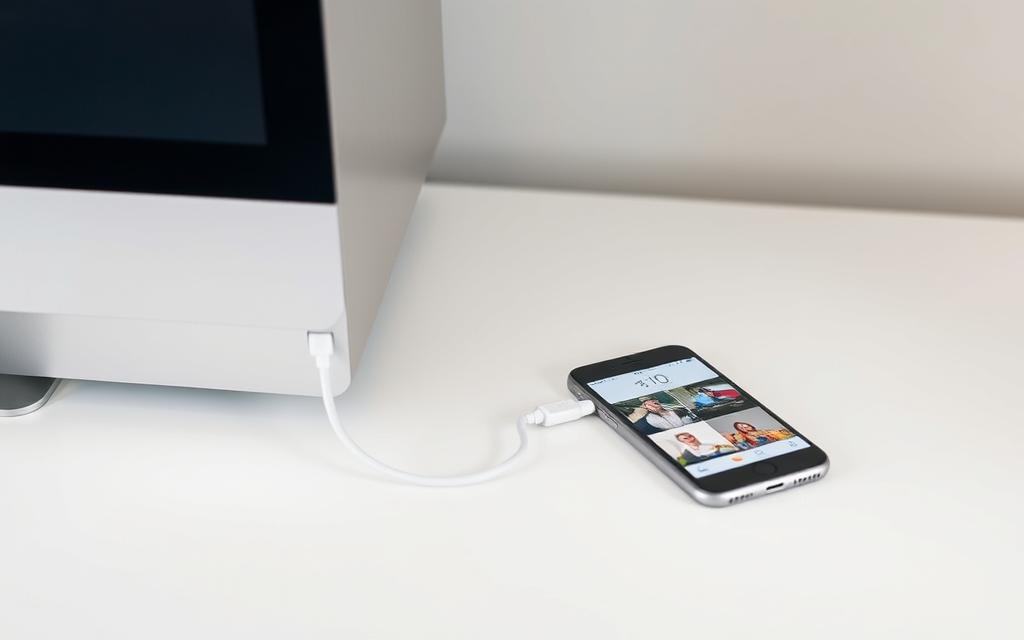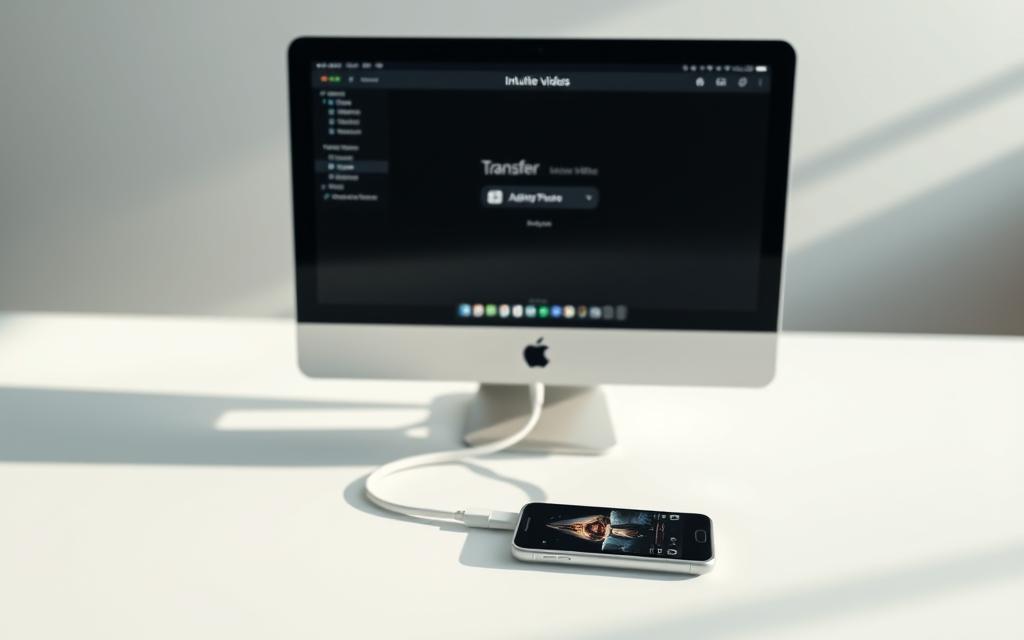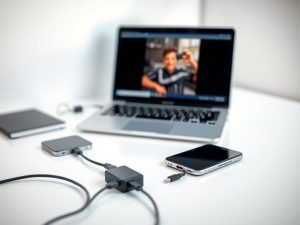Table of Contents
Transferring media files between devices can sometimes feel like a daunting task. Whether you’re moving photos, videos, or other data, the process should be straightforward and efficient. For those using Windows PCs, understanding the best methods to connect your iPhone is essential.
One of the most reliable ways to transfer files is by using a USB cable. This method ensures your videos and photos are moved directly to your computer without relying on cloud storage. It’s also a great option for those who prefer local transfers over online solutions.
Another popular approach is syncing via the Apple Devices app. This method supports seamless transfers and ensures your media files retain their quality. Whether you’re dealing with large video libraries or just a few clips, these methods offer flexibility and control.
For more tips on managing your media files, check out this guide on transferring videos between devices. It’s packed with useful insights to make the process even smoother.
How to Import Videos from iPhone to PC Using iCloud Photos
iCloud Photos offers a seamless way to sync and access your videos and photos. This cloud-based solution ensures your media files are available across all your Apple devices and even your Windows PC. With automatic syncing, you can keep your library up-to-date without manual effort.
Setting Up iCloud Photos for Automatic Syncing
To begin, open the Settings app on your iPhone. Navigate to your Apple ID and select iCloud. Tap on Photos and enable iCloud Photos. This step ensures your media files are uploaded to the cloud and synced across devices.
For Windows users, download and install iCloud for Windows. Once installed, sign in with your Apple ID and enable Photos. This setup allows your PC to access your iCloud library seamlessly.
Downloading Originals to Your PC
Before transferring files, make sure Download Originals is enabled in your iCloud Photos settings. This ensures your videos and photos are saved in their highest quality. Open File Explorer on your PC, and you’ll find your iCloud library under iCloud Photos.
From here, you can select and download your videos directly to your computer. This process is ideal for those who prefer local storage over cloud solutions.
For large libraries, consider upgrading your iCloud storage plan. This ensures you have enough space for all your media files without compromising quality.
How to Import Videos from iPhone to PC Using a USB Cable
Using a USB cable is one of the most efficient ways to move files between your iPhone and PC. This method ensures a direct connection, making it ideal for transferring large video files quickly. Whether you’re working with photos, videos, or other data, a USB cable provides a reliable solution.

Connecting Your iPhone to a Windows PC
To start, connect your iPhone to your PC using a USB cable. Ensure the cable is in good condition and properly inserted into a functioning USB port. On your iPhone, you’ll see a Trust This Computer prompt. Tap Trust to authorize the connection.
If the prompt doesn’t appear, try these steps:
- Check the USB cable and port for damage.
- Restart both your iPhone and PC.
- Update your devices to the latest software versions.
Using the Apple Devices App for Transfer
For a smoother experience, install the Apple Devices app from the Microsoft Store. This app replaces iTunes and simplifies file management. Once installed, open the app and connect your iPhone. You’ll see your device listed, allowing you to browse and transfer files easily.
Here’s how to optimize the process:
- Enable Most Compatible format in your iPhone’s camera settings.
- Use batch selection to transfer multiple files at once.
- Organize files into custom folders on your PC for better management.
Fixing Incorrect Video Orientation
Sometimes, videos may appear rotated incorrectly when viewed on your PC. To fix this, use the Apple TV app or iTunes to convert the files. Open the app, select the video, and choose Convert to Compatible Format. This ensures your videos display correctly.
For 4K videos, maintain quality by enabling Download Originals in your iPhone’s settings. This step ensures your files retain their highest resolution during the transfer process.
Alternative Methods to Transfer Videos to Your PC
Exploring alternative methods to move your media files can simplify the process. While traditional options like USB cables and iCloud are effective, other solutions offer flexibility and convenience.
Wireless transfer apps are a great option for those who prefer a cable-free experience. Apps like Send Anywhere and AirDroid allow you to move files between devices seamlessly. These tools are compatible with Windows and support high-speed transfers, making them ideal for large media libraries.
External drives can also serve as intermediary storage. Simply copy your files to an external HDD or SSD and then connect it to your computer. This method is perfect for transferring large volumes of data without relying on network connections.
For iPhones with compatible hardware, SD card readers are another efficient solution. Devices like the Apple Lightning to SD Card Camera Reader let you import photos and videos directly. This is especially useful for users who frequently work with cameras.
Network transfers through shared folders are another practical option. By enabling file sharing on your Windows PC, you can access your media files from any device on the same network. This method is secure and eliminates the need for physical storage.
For more detailed guidance on transferring files between devices, check out this Apple support guide. It provides step-by-step instructions to ensure a smooth process.
Whether you prefer wireless apps, external drives, or network solutions, these alternative methods offer flexibility for managing your media files. Choose the option that best fits your needs and workflow.
Conclusion
Moving files between devices doesn’t have to be complicated. Whether you prefer USB cables, iCloud, or wireless apps, each method offers unique benefits. For speed and reliability, USB transfers are ideal. Cloud solutions like iCloud ensure seamless syncing across devices.
For large libraries, combining methods can save time. Always verify your movies and photos before deleting them from your device. This ensures no important data is lost. Regularly update your iOS and Windows systems to maintain compatibility.
If issues arise, Apple’s support channels are a great resource. For long-term storage, consider external drives or cloud backups. Stay mindful of auto-deletion policies in cloud services to avoid losing files unexpectedly.
By following these tips, you can manage your media efficiently. Explore advanced techniques to further streamline your workflow and keep your files organized.
FAQ
Can I use iCloud Photos to transfer videos from my iPhone to a PC?
Yes, iCloud Photos allows you to sync and access your media across devices. Enable iCloud Photos on your iPhone, and then download the originals to your PC via the iCloud website or app.
What is the easiest way to transfer videos using a USB cable?
Connect your iPhone to your Windows PC using a USB cable. Open the Apple Devices app or File Explorer, select your device, and manually copy the videos to your desired folder.
Why do my videos appear with incorrect orientation after transferring?
This issue often occurs due to compatibility settings. Ensure your PC’s media player supports the video format, or use third-party software to correct the orientation during or after the transfer process.
Are there alternative methods to transfer videos without a USB cable?
Yes, you can use cloud services like Google Drive, Dropbox, or OneDrive. Alternatively, email the videos to yourself or use third-party apps designed for wireless file transfers.
Do I need special software to transfer videos from my iPhone to a PC?
For Windows PCs, the Apple Devices app or File Explorer is sufficient. For advanced features or bulk transfers, third-party software like iTunes or dedicated transfer apps can be helpful.
How can I ensure my videos are transferred in the highest quality?
Use the “Download Originals” option in iCloud Photos or manually select the highest resolution settings in your transfer app. Avoid compressing files during the process.
What should I do if my PC doesn’t recognize my iPhone?
Ensure your USB cable is functional, and your iPhone is unlocked. Update iTunes or the Apple Devices app, and check for driver updates on your PC. Restart both devices if necessary.









